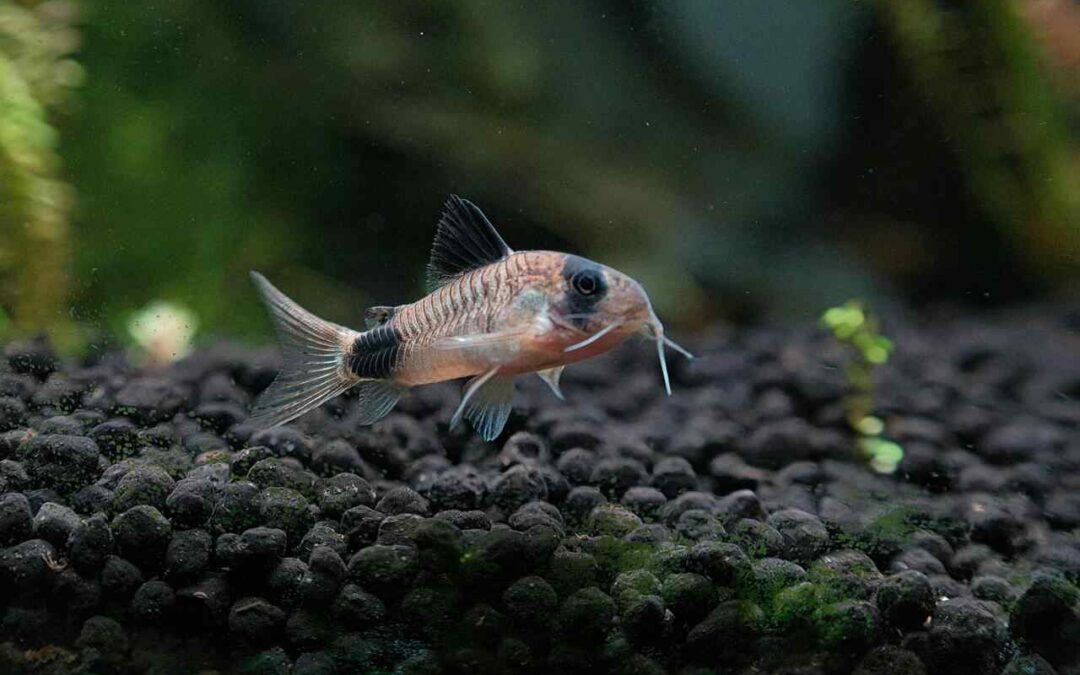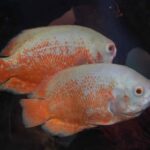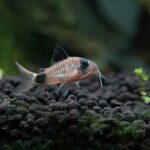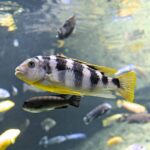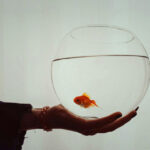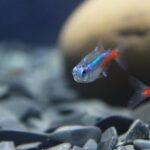If you’re looking for a peaceful, active, and downright adorable bottom-dweller for your aquarium, Corydoras catfish—often called Corys—are a perfect choice. These small, armored fish are known for their gentle personalities and playful group behavior. Best of all, they’re hardy and easy to care for once their needs are met.
Let’s walk through everything you need to know about Corydoras fish care—from tank setup to diet, water conditions, and keeping them happy for years to come.
Habitat and Tank Setup
Corydoras thrive in clean, well-maintained aquariums that mimic their natural South American habitats. While they’re small, they need room to roam since they’re active bottom dwellers.
- Tank Size:
A 20-gallon tank is the recommended minimum for most average-sized Cory species. A larger footprint (wider tank rather than taller) gives them more space to explore the bottom. - Substrate:
Choose a soft substrate like fine sand or smooth gravel. Corys have delicate barbels—those little whiskers they use to dig around for food—so sharp gravel can injure them or cause infections. - Hiding Spots:
Provide plenty of hiding areas using plants, caves, driftwood, or rock formations. Corys like to retreat occasionally, especially when startled or resting. - Lighting:
They prefer subdued lighting. You can use floating plants or driftwood to create shaded areas that make them feel more secure. - Filtration and Oxygen:
Corys appreciate well-oxygenated water and clean conditions. A gentle filter that doesn’t create a strong current is ideal, as they prefer calm waters.
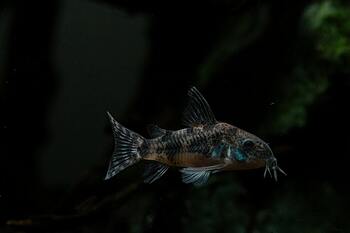
Social and Behavioral Needs
Corydoras are schooling fish—they’re happiest when surrounded by their own kind. Keeping them alone often leads to stress or boredom.
- Group Living:
Always keep at least six Corydoras of the same species together. In groups, they exhibit natural, playful behaviors—darting around, resting in clusters, or exploring the bottom in sync. - Tank Mates:
These are peaceful fish that get along well with most community species such as tetras, rasboras, guppies, and dwarf gouramis. Avoid aggressive or fin-nipping fish like barbs or cichlids, as they can stress or injure your Corys. - Behavior:
Corys are generally active during the day but may also scavenge during dim light hours. They’re also known for their endearing “breathing behavior”—occasionally darting to the surface to gulp air, which is completely normal.
Diet and Feeding
Corydoras are bottom-feeders and scavengers, but that doesn’t mean they should rely solely on leftover flakes. To keep them healthy and vibrant, they need a balanced and varied diet.
- Main Diet:
Offer high-quality sinking pellets formulated for bottom feeders. These ensure the food reaches them, as they often miss out on floating flakes that other fish eat first. - Supplements:
Add protein-rich foods like bloodworms, blackworms, or brine shrimp (live or frozen) several times a week. These treats bring out their natural foraging behavior and keep them well-nourished. - Feeding Tips:
Feed small amounts once or twice a day, enough that they can finish within a few minutes. Place food directly on the substrate or use feeding dishes to ensure your Corys get their share.
Water Conditions
Corydoras come from slow-moving rivers and streams in South America, where water is soft and clean. Maintaining good water quality is essential for their health.
- Temperature:
Most Corydoras prefer water between 72–82°F (22–28°C). Some species, like the Panda Cory, do better in cooler water around 65–70°F (18–21°C). - pH Level:
Keep the pH between 8–7.8, which suits most species well. They can tolerate slight fluctuations, but stability is key. - Water Changes:
Regular water changes keep toxins like ammonia and nitrate under control. Aim to change 10% weekly or 25% every two weeks, always treating new water with a dechlorinator before adding it. - Filtration:
Use a reliable filter that maintains gentle water flow. Corys dislike strong currents, so sponge filters or canister filters with adjustable flow are excellent options.
Health and Lifespan
Corydoras are generally hardy, but like all fish, they’re sensitive to poor water quality or rough handling.
- Lifespan:
With proper care, Corydoras can live 5 to 10 years, and some aquarists report even longer lifespans in stable tanks. - Common Health Issues:
- Barbel Erosion: Caused by sharp substrate or dirty tank bottoms. Prevent it with smooth sand and regular cleaning.
- Gill or Fin Issues: Often due to poor water conditions or bacterial infections.
- Stress Signs: “Glass surfing” (swimming up and down the tank walls) or gulping air excessively can indicate poor water quality or lack of oxygen.
Maintaining stable water parameters and avoiding sudden temperature shifts go a long way in keeping them healthy.
Breeding Tips (Optional for Enthusiasts)
Breeding Corydoras can be rewarding. They typically spawn after a cool water change that simulates rain in their natural habitat. Males will chase females around the tank, and the female will attach her eggs to flat surfaces or plant leaves.
If you want to raise fry, move the eggs to a separate breeding tank, as adult fish may eat them. Provide gentle aeration and feed fry with infusoria or powdered fry food until they grow large enough for baby brine shrimp.
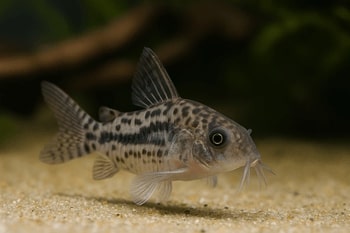
Personality and Fun Facts
Corydoras are often described as “little underwater puppies.” They’re curious, peaceful, and social—constantly exploring or resting together in groups. Many aquarists find them among the most charming fish in a tank.
They also have a unique ability to gulp air from the surface, absorbing oxygen through their intestines—a survival adaptation for low-oxygen environments in the wild.
FAQs About Corydoras Fish Care
1. How many Corydoras should be kept together?
At least six. Corydoras are schooling fish that feel secure and display their best behavior when kept in groups.
2. Can Corydoras live with bettas?
Yes, usually. Corys are peaceful bottom-dwellers that don’t bother bettas. Just ensure your betta isn’t overly aggressive.
3. Do Corydoras eat algae?
Not really. They may nibble on biofilm or leftover food, but they’re not effective algae cleaners.
4. How often should I clean my Corydoras tank?
Do partial water changes weekly or bi-weekly, and vacuum the substrate regularly to remove waste buildup.
5. What’s the best food for Corydoras?
High-quality sinking pellets, supplemented with bloodworms or brine shrimp for extra protein.
6. How long do Corydoras live?
With proper care, they can live between 5–10 years, sometimes even longer in stable aquarium setups.
Final Thoughts
Corydoras fish are the perfect combination of charm, activity, and ease of care. Whether you’re a beginner or an experienced aquarist, they bring life and character to any community tank. By giving them a soft substrate, good company, and clean, stable water, you’ll enjoy their playful antics and peaceful presence for years to come.

